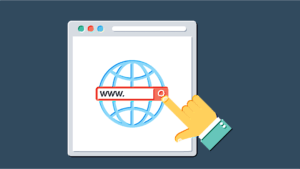Remember the soul-crushing sound of a 56k modem connecting? That digital screech was the soundtrack of early internet business, when downloading a single image took minutes and video calls were pure science fiction. Today, we stream 4K videos without thinking twice and conduct global meetings in crystal-clear quality. This isn’t just a story of technological progress—it’s the tale of how internet speed fundamentally transformed what business means in the modern world. From the patience-testing days of dial-up to the lightning-fast possibilities of 5G, each leap in connection speed didn’t just make things faster; it revolutionized entire industries, created new business models, and redefined customer expectations. Understanding this journey isn’t just nostalgic—it reveals why your current internet speed might be the invisible barrier holding your business back.
The Dial-Up Era: When Patience Was a Business Requirement
In the late 1990s, 56k dial-up modems represented the pinnacle of home internet technology. Businesses operated in a world where sending a 1MB file took 3-4 minutes on a good day. Websites were stripped-down text affairs because anything more would test customers’ patience beyond breaking points. The famous “dancing baby” GIF that took the internet by storm was only 1MB—today’s standard website loads 20 times that data.
Business constraints in the dial-up era shaped early e-commerce profoundly. Amazon started as a bookstore partly because book descriptions required minimal bandwidth. Product images were thumbnails or non-existent. Customer expectations aligned with technical limitations—people accepted waiting because everyone waited. A Toronto entrepreneur from that era recalls spending entire nights uploading product catalogs, praying the connection wouldn’t drop and force a restart.
Yet this limitation sparked incredible innovation. Businesses learned to communicate value through words rather than visuals. Email became the killer business application because text traveled efficiently over slow connections. The foundations of modern web design and development were laid by pioneers who turned constraints into creative solutions, principles that still guide effective design today.
The Broadband Revolution: Business at the Speed of Thought
The arrival of broadband in the early 2000s didn’t just increase speeds—it fundamentally changed what online business could be. Always-on connections eliminated the dial-up dance of connecting and disconnecting. Speeds jumped from 56 kilobits to several megabits per second. Suddenly, rich media became viable, transforming every aspect of digital business.
E-commerce exploded as high-quality product images became standard. Customers could actually see what they were buying, driving confidence and sales. Video demonstrations and virtual tours became powerful sales tools. Businesses that adapted quickly to these possibilities gained massive advantages. Netflix pivoted from DVD-by-mail to streaming, a move only possible with broadband adoption. This shift would have been impossible in the dial-up era.
The broadband revolution also transformed internal business operations. Cloud computing became practical, allowing businesses to access powerful software and storage without massive infrastructure investments. Remote work shifted from emergency option to viable alternative. Collaboration tools evolved from basic email to rich platforms supporting real-time document sharing and video conferencing. Modern content marketing was born as businesses could finally deliver engaging multimedia content without frustrating audiences.
The Mobile Internet: Business in Your Pocket
The introduction of 3G and 4G networks created another paradigm shift. Internet access became truly mobile, untethering business from desktops and offices. This mobility didn’t just mean checking email on the go—it revolutionized customer behavior and business models. The “always connected” consumer emerged, expecting instant access to information, services, and purchases anywhere, anytime.
Mobile internet speeds enabled entirely new business categories. Uber couldn’t exist without drivers and passengers having reliable mobile data. Instagram built a billion-dollar business on people sharing photos instantly from anywhere. Food delivery apps transformed restaurants by enabling real-time ordering and tracking. These weren’t just faster versions of existing businesses—they were entirely new models enabled by ubiquitous fast internet.
For traditional businesses, mobile internet created new challenges and opportunities. Websites needed mobile optimization as customers increasingly browsed and bought from phones. Response time expectations shrank from hours to minutes. Location-based marketing became possible and powerful. Businesses that failed to adapt to mobile-first thinking watched customers migrate to more responsive competitors. This mobile revolution made sophisticated SEO strategies essential as search behavior fundamentally changed.
The Fiber Optic Game-Changer
Fiber optic internet represented another quantum leap, delivering speeds measured in gigabits rather than megabits. This wasn’t just incrementally faster—it was transformatively different. Businesses could transfer massive files instantly, stream multiple 4K videos simultaneously, and support dozens of employees on video calls without degradation. The constraints that shaped online business for two decades suddenly evaporated.
This speed abundance enabled cloud-everything strategies. Businesses moved entire operations online, accessing powerful software and infinite storage without local infrastructure. Video became the dominant content format as bandwidth constraints disappeared. A Toronto video production company that once shipped hard drives overnight now transfers terabytes of footage in minutes. This transformation extends beyond convenience—it fundamentally changes business economics and possibilities.
The psychological impact proves equally important. When internet speed is abundant, businesses think differently. They attempt projects previously impossible, serve customers in richer ways, and operate with assumption of connectivity. This abundance mindset drives innovation in ways that incremental improvements never could. Companies leveraging fiber’s capabilities through strategic social media marketing create immersive brand experiences impossible just years ago.
5G: The Current Revolution
5G represents not just another speed increase but a fundamental reimagining of what wireless internet can be. With theoretical speeds up to 20 gigabits per second and latency under 1 millisecond, 5G enables experiences indistinguishable from wired connections. This technology promises to make location irrelevant for even the most demanding business applications.
The business implications extend far beyond faster phones. 5G enables real-time augmented reality for retail, allowing customers to visualize products in their space before purchasing. Remote surgery becomes possible with ultra-low latency. Autonomous vehicles can communicate instantly with infrastructure and each other. Smart cities can manage resources in real-time. These aren’t incremental improvements—they’re revolutionary capabilities that will birth entirely new industries.
Early 5G adopters are already gaining competitive advantages. Construction companies use 5G-connected drones for real-time site monitoring. Manufacturers implement wireless robotics previously impossible due to latency. Retailers create immersive shopping experiences blending physical and digital seamlessly. The businesses exploring 5G’s possibilities today will define tomorrow’s standard practices.
The Hidden Cost of Slow Internet
While internet speeds have dramatically increased, many businesses still operate with connections that constrain their potential. The cost isn’t just frustrated employees waiting for files to upload—it’s lost opportunities, reduced productivity, and competitive disadvantages that compound daily. Understanding these hidden costs helps justify infrastructure investments that might seem expensive but pale compared to opportunity costs.
Productivity losses from slow internet are staggering when calculated properly. Employees waiting 30 seconds for pages to load, multiplied across hundreds of daily interactions, equals hours of lost productivity weekly. Video calls that freeze and stutter don’t just waste time—they erode communication quality and relationship building. Slow upload speeds delay project completion and client deliverables. A marketing agency calculated that upgrading their internet saved each employee two hours weekly—equivalent to hiring additional staff at zero cost.
Customer experience suffers enormously from slow connections. Modern consumers expect instant responses and seamless interactions. When your website loads slowly or customer service systems lag, visitors don’t blame their internet—they blame your business. Studies show that each second of delay in page load time reduces conversions by 7%. For e-commerce sites, slow internet literally means lost revenue every minute of every day.
Future-Proofing Your Business Connectivity
The journey from 56k to 5G teaches a crucial lesson: internet speed will continue accelerating, and businesses must prepare for possibilities we can’t yet imagine. Future-proofing requires not just fast current connections but infrastructure and thinking that can adapt to whatever comes next. Smart businesses invest in connectivity that seems excessive today but will prove essential tomorrow.
Practical future-proofing starts with assessing current and anticipated needs. Consider not just today’s requirements but how emerging technologies might demand greater bandwidth. If you’re exploring AI, IoT devices, or advanced analytics, bandwidth needs will multiply. Building infrastructure with expansion capability costs marginally more than minimum viable solutions but provides dramatically more flexibility.
The strategic approach extends beyond raw speed to reliability and redundancy. Single connection points create vulnerabilities that can cripple modern businesses. Redundant connections from different providers ensure continuity when primary connections fail. This redundancy thinking should extend to internal networks, ensuring WiFi coverage and capacity that exceeds current needs. The goal isn’t just avoiding problems—it’s enabling opportunities that high-speed, reliable connectivity makes possible.
Speed as Competitive Advantage
The evolution from 56k modems to 5G networks tells the story of modern business transformation. Each speed increase didn’t just make existing processes faster—it enabled entirely new ways of working, serving customers, and creating value. Businesses that recognized and leveraged these opportunities early gained advantages that compounded over years. Those that lagged found themselves playing perpetual catch-up.
Today’s business environment assumes high-speed connectivity as baseline infrastructure, like electricity or running water. Yet many businesses still operate with internet speeds that constrain their potential. They accept slow file transfers, poor video quality, and limited cloud capabilities as normal, not recognizing the compound cost of these limitations. Meanwhile, competitors with better connectivity operate in an entirely different realm of possibility.
The lesson from this journey is clear: internet speed isn’t just about technology—it’s about business capability. The companies thriving today invested in connectivity before it seemed necessary. They understood that internet speed shapes what’s possible, and possibility shapes success. As we stand on the brink of whatever comes after 5G, the question isn’t whether to upgrade your connectivity—it’s whether you’ll be among the leaders or the laggards when the next revolution arrives.
Ready to ensure your business connectivity matches your ambitions? ByteInspired helps Toronto businesses optimize their entire digital infrastructure, from internet connectivity to website performance. Don’t let slow connections constrain your potential while competitors race ahead with modern infrastructure. Contact us today to assess your current setup and build a connectivity strategy that powers growth rather than limiting it.
To visit our social media please click on Facebook and Instagram





